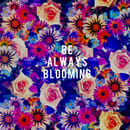Ever since I arrived at Kenyon, I’ve watched an insane amount of America’s Next Top Model. I don’t what it is, but it’s so therapeutic to watch. Something about watching petty people try to fight their way to the top of the modeling world allows me to escape from the stress that I am privy to at Kenyon. I am also fully aware that it’s “trash” television, but it’s called a guilty pleasure for a reason. I’m not watching this to be intellectually stimulated. I’m watching this to watch Tyra Banks tell people that they aren’t being fierce enough.
I think that while the show itself is vapid and overly dramatic, it does raise some good points about the reality of the modeling industry. As a woman of color, Tyra always talks about how hard it was to break into the world of modeling because she didn’t fit the mold of a traditional model: a thin, white woman with long legs and blue eyes. During the show itself, she strives to gather a diverse group of women with different identities and backgrounds, going so far as to explicitly state that she wanted to cast one contestant in the first season because she was of Latin American descent. She also encourages the models to embrace their unique backgrounds while openly talking about her childhood in Inglewood and discussing the hardships she faced when she first began her career.
Despite the many positive conversations that Top Model has had about different issues, the main topic that it still struggles with is plus-size models. In their newest season, they have one famed plus-size model, Ashley Graham, as a judge, but they lack representation from plus-size contestants. Throughout their 23 seasons, only a handful of plus-size women have competed and only one has gone on to claim the coveted title. Within the first season, you can see the problems that the judges have with Robin, the one plus-size contestant present in that season. Throughout the show, she was told to lose weight and that she doesn’t look like a model. One of the judges, Janice Dickinson, the world’s first supermodel, refused to say that she was a “real model.” She continued to be vocal during the rest of the season about her dislike of Robin and her dislike of the idea that the next Top Model had the potential to be plus-size. Tyra always came to her defense, but it never seemed like enough. A plus-size model didn’t even win until the tenth season.
Some of the opinions in the show about plus-size models and plus-size women in general are mirrored in the modeling industry. While nowadays it’s becoming more commonplace to see successful models who aren’t a size 2, there is a heavy amount of criticism aimed at plus-sized models. Some claim that they promote an unhealthy lifestyle while others just flat out say that they aren’t beautiful enough to be models. Both of these are obviously wrong: people who have more fat on them aren’t necessarily unhealthy and you don’t have to be thin to be beautiful. So why is there still so much animosity towards plus-size models? I think the problem lies with the normalization of rigid beauty standards throughout the world. While not an easily solvable issue, the harshness is being continuously softened by body positivity movements that are influencing popular culture slowly but surely.
As a plus-size woman myself, I always am proud when I see my body type celebrated by others. Things like inclusion in clothing lines or visibility in the modeling industry never fail to make me feel like I’m finally being recognized by a world that previously shunned me. When I first saw people like Ashley Graham, Gee-Yang Kim, and Iskra Lawrence, I was shocked. We shared the same thick thighs and full tummies and they were absolutely gorgeous. I saw myself in them and so I was gorgeous too.
I know that the problems in the modeling industry can’t be fixed by a TV show like America’s Next Top Model, but the show should strive to be as diverse as it claims to be. See plus-size models for who they really are: models. Recognize that more young women can identify with them and their struggles. Celebrate people of all races, sexualities, genders, and body types. If you can get one of the world’s most famous plus-size models as a judge, then at least try harder to get a plus-size contestant.



